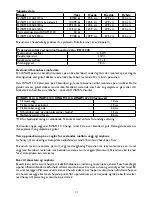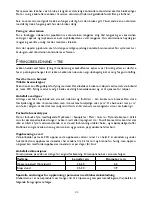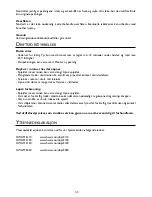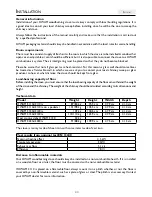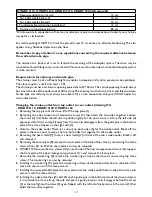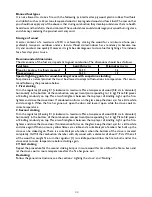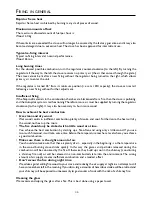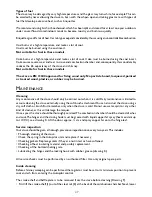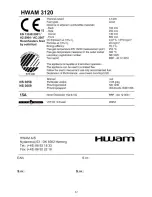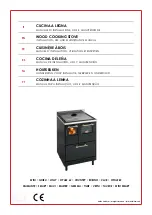
45
Lighting the stove (drawing E)
A successful combustion process requires that the wood is lit in the right way. A cold stove and a cold
chimney challenge the combustion process. It is important to achieve a high flue gas temperature quickly.
Turn the regulator (1) clockwise to maximum. Place two pieces of wood (5-8 cm in diameter) horizontally
in the bottom of the combustion compartment (corresponding to 1-2 kg). Place 5-8 pieces of kindling
randomly on top. Place two firelighters between the top layer of kindling. Light up the fire-lighters and close
the stove door. If condensation forms on the glass, keep the door ajar for a little while and close again.
When the kindling is burning well, turn the regulator (1) to middle position. If the fire goes out when
the regulator is turned, return it to maximum position again until the fuel catches fire and then turn it
to middle position again. Allow the kindling to burn up completely until there are no longer any visible
flames. The stove can then be stoked again.
Important!
The ash pan must not be opened during the lighting stage and must always be kept closed
when the stove is lit or the Autopilot will not work. Only open the door when lighting the stove, refuel-
ling it and cleaning it.
Stoking (drawing E)
When no more yellow flames are visible and a suitable layer of embers has built up, the stove can be
stoked again. There is a suitable layer of embers when the bottom of the stove is covered completely
and the embers are glowing in a circle around the shaking grate. Put at least two pieces of wood into the
stove, weighing up to 1 kg each. Do not regulate the stove again as the Autopilot system will do this, but
the temperature can be adjusted with the regulator (1). Turning it to minimum (counter-clockwise) will
reduce the rate of combustion and make the stove burn slower. Turning to maximum (clockwise) will
increase the rate of combustion and make the stove burn faster. Wait until the layer of embers is suitably
low before stoking again.
During combustion, the outer surfaces of the stove will become hot, and due care must
therefore be shown.
Fuelling with coal, patent fuel or carbonised coal
The stove is not designed for fuelling with coal and carbonised coal. However, patent fuel can be used to
fuel the fire and should be placed on the embers produced by the burned wood. Turn the regulator to
its full clockwise position until the patent fuel pieces fully ignite.
Remember that the regulator must then be turned to the left again.
Be aware that using fuels other than wood, will cause soot to form on the glass pane.
Operating the heat compartment damper - HWAM 3130
There is a damper at the back of the stove between the top plate and the heat compartment that opens
and closes the flow of convection air in the heat compartment. The supply of convection air can be opened
by moving the damper to the left and closed by moving the damper to the right.
We recommend that the convection damper is kept closed when fuelling the stove in order to heat up
and thereby store heat in the soapstone interior of the heat compartment as rapidly as possible.
Keeping the convection damper closed retains the heat stored in the soapstone as long as possible. When
the damper is opened, the heat from the soapstone in the heat compartment will rapidly be transferred
to the room.
Summary of Contents for 3110
Page 2: ...2 ...
Page 4: ...4 B C A D 11 12 14 14 15 3 1 1 4 45 4 3 2 1 9 11 10 17 1 6 5 7 8 2 3 15 4 16 4 3 14 12 13 ...
Page 5: ...5 F 6 2 1 3 4 5 G 3 0 E 1 ...
Page 6: ...6 1 6 6 7 4 5 9 8 2 3 H1 10 10 11 ...
Page 7: ...7 H2 ...
Page 8: ...8 K ...
Page 50: ...50 ...
Page 51: ...51 ...
Page 52: ...52 ...
Page 53: ...53 ...
Page 54: ......
Page 55: ......

